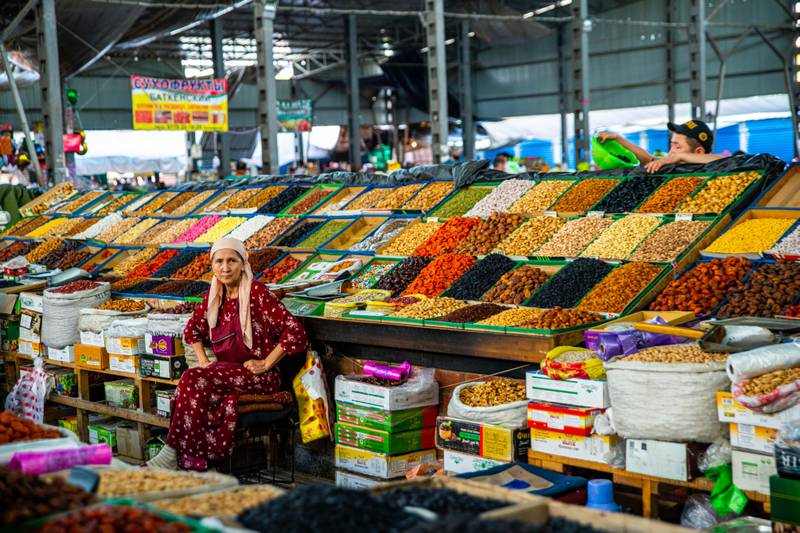What to do and see in Bishkek, Abu Dhabi's new twin city
02 November, 2022

Abu Dhabi has entered into a twinning agreement with Bishkek, the capital of Kyrgyzstan, as a way of developing trade and economic, cultural and tourism ties between the two cities.
The capital of Kyrgyzstan sits in the Chu River Valley, within the Tien Shan mountain range. It is the largest city in Kyrgyzstan, but with a population of just under 1.1 million, it is small enough to be explored over a long weekend. A flying time of under four hours from the UAE also makes it a good option for shorter getaways.
Laid on a grid with wide boulevards and plenty of green spaces, Bishkek is under-appreciated as a tourist and cultural destination. Soviet-era apartment complexes rub shoulders with marble-fronted buildings and orchards are flanked by irrigation canals. Snow-capped mountains are ever-visible to the south of the central Asian city, once a caravan stop on the Silk Road.
As part of its strengthened ties with the UAE, Kyrgyzstan has announced plans to name one of its mountain peaks after the UAE's Founding Father, the late Sheikh Zayed bin Sultan Al Nahyan.
What to see and do in Bishkek
Ala-Too, Bishkek’s largest square, is also its cultural epicentre. It was built in 1984 to celebrate the 60th anniversary of the Soviet Republic of Kirgizia.
An imposing statute of Lenin that used to sit in its centre was relocated in 2003 and was replaced in 2011 by a 10-metre statue of national hero Manas, to mark the 20th anniversary of the independence of Kyrgyzstan. The area is also home to a monument bearing a huge Kyrgyz flag, which is permanently guarded by soldiers. The changing of the guard happens every two hours in summer and every hour in winter.
Ala-Too is often the site of concerts, dance performances, festivals and parades, and in the evenings comes to life with merchants selling a range of wares.
Located on the square is the State Historical Museum, formerly known as the Lenin Museum. It is one of the largest in Central Asia, with exhibits that range from rock paintings and household items from the Bronze Age, to jewellery, ancient coins and ethnographic objects from the late 19th and early 20th centuries.
Around the corner is Dubovy, or Oak, Park. In addition to the majestic trees that give it its name, the green space is home to sculptural benches and more than 200 works of public art and monuments dating back to the Soviet era.
Osh Bazaar is located on Bishkek’s western outskirts, but easily accessible with public transport or via a 20-minute walk from the city centre. The market attracts locals buying meat, dairy products, fruit, vegetables and other essentials, but there’s also clothing, colourful fabrics, furniture, dry fruits, nuts, spices and an infinite supply of other souvenirs on offer. Stop to sample some local delicacies, including salads, cheeses and yoghurt.
Bishkek has a thriving arts scene, with a number of intriguing galleries. Gallery M was founded by local creatives Momunbek Akmatkulov and Zhyldyz Oruzbayeva, and specialises in contemporary fundamental art, including painting, graphics, sculpture and photography.
Meanwhile, Kyrgyz embroidery, evocative paintings and hand-felted rugs are on show at the State Museum of Fine Arts.
Where to stay
Bishkek is home to a handful on internationally branded hotels, including a Novotel, Sheraton and Hyatt Regency. Orion Hotel Bishkek is another good option, with rooms starting from Dh439 per night.
Getting there
Flydubai operates daily flights to Bishkek Manas International Airport, with return economy fares starting from Dh1,955. Emirates also flies to the destination, with fares starting from Dh3,656. Air Arabia operates services from Sharjah to Bishkek on Wednesdays, Saturdays and Sundays, with return flights starting from Dh1,850.
Entry requirements
Kyrgyzstan reintroduced visa-on-arrival in May, with anyone holding a valid UAE residence visa now eligible. There are currently no Covid-19-related restrictions in place.
Source: www.thenationalnews.com
